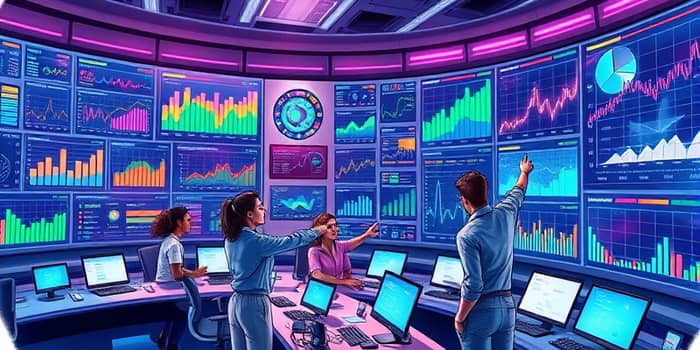
In today’s fast-paced business landscape, the ability to monitor and adjust resource allocations instantly can make or break an organization’s success. By leveraging advanced visual dashboards, teams gain unparalleled visibility into every critical metric, ensuring they are always one step ahead in an ever-changing environment.
A real-time dashboard is a digital interface that continuously updates data from multiple sources, giving stakeholders live insight into performance metrics. Instead of relying on static reports delivered hours or days later, users can access up-to-the-minute insights that empower swift action and informed judgment.
Under the hood, these dashboards harness event streaming, in-memory processing, and automated refresh mechanisms to integrate seamlessly with APIs, databases, and cloud platforms. The result is a single pane of glass where complex information is distilled into clear visual formats.
Creating a responsive dashboard involves several key steps that together form a single source of truth for decision-makers:
The most effective dashboards combine functionality with an intuitive design, offering features such as:
Organizations that implement these solutions report significant gains across the board, such as:
Choosing the right chart or widget depends on the context and goals of your analysis. Some popular options include:
From sales to manufacturing, real-time dashboards have reshaped how teams allocate resources and respond to emerging patterns:
In sales and marketing, leaders can monitor quotas and campaign performance live, adjusting strategies when conversion rates dip. Operations managers track inventory and shipping logistics down to the minute, preventing stockouts and delivery delays.
Project managers leverage live workload charts to redistribute tasks and avoid burnout. Finance teams watch budget burn rates and cash flow in real time, making adjustments to forecasts instantly. Even event planners use digital floor plans to manage room assignments and attendee traffic on the fly.
While the advantages are clear, successful implementation requires addressing several challenges:
Data quality is paramount—dashboards only shine when the underlying source systems are reliable. Integrating legacy platforms can demand significant upfront effort, from mapping data fields to building secure API connections.
Additionally, poorly designed dashboards risk information overload, burying key insights under a sea of charts. Finally, real-time data can be highly sensitive, so robust encryption and role-based access controls are essential.
Real-time visual dashboards have emerged as a transformative force, empowering organizations with rapid, data-driven decision-making and dynamic resource allocation capabilities. By centralizing diverse data streams, automating refresh cycles, and presenting information in clear, actionable formats, these tools deliver tangible benefits in efficiency, collaboration, and competitive advantage.
To get started, evaluate your existing systems, establish clear performance metrics, and choose a dashboard solution that supports your data sources. With careful planning, design, and ongoing iteration, your team will unlock the full potential of live insights, staying agile in a world where every second counts.
References













